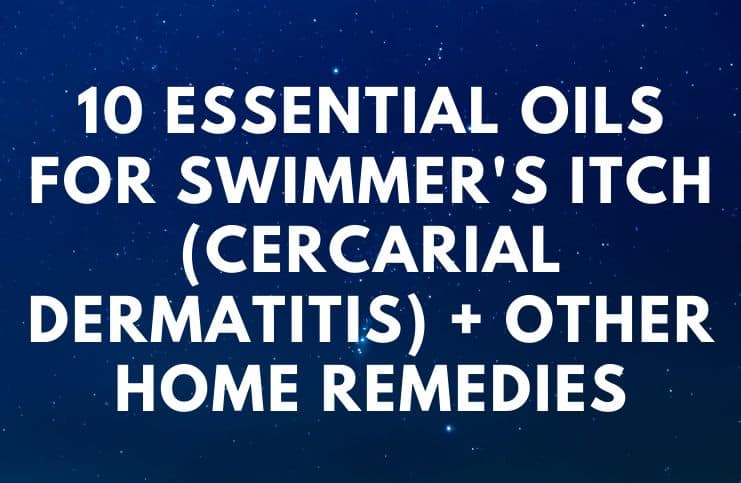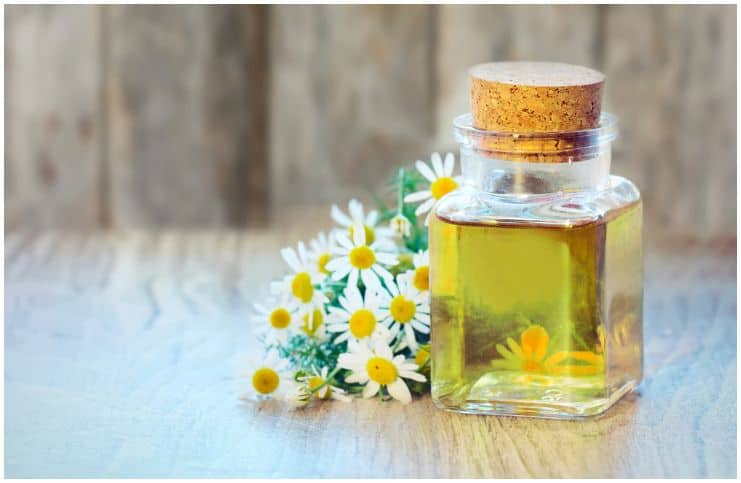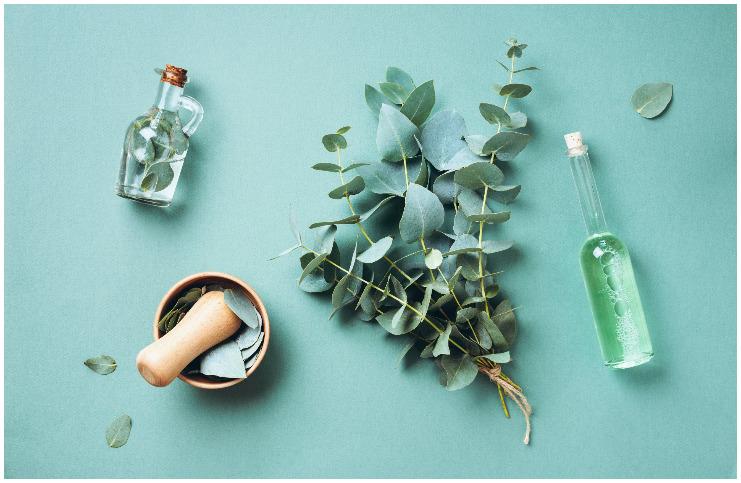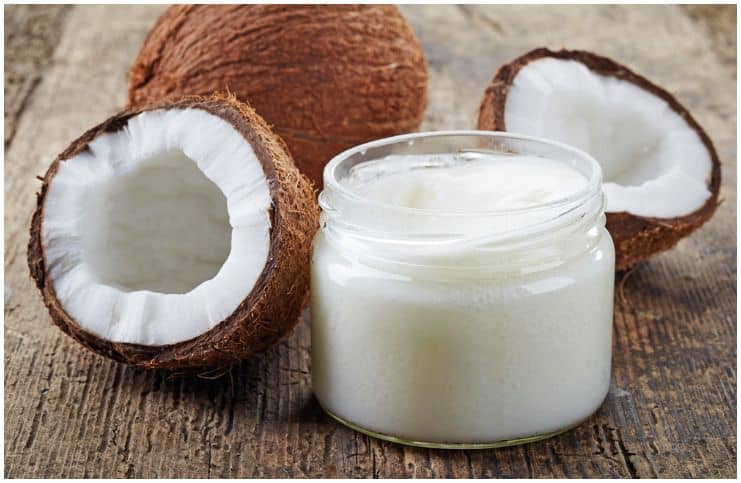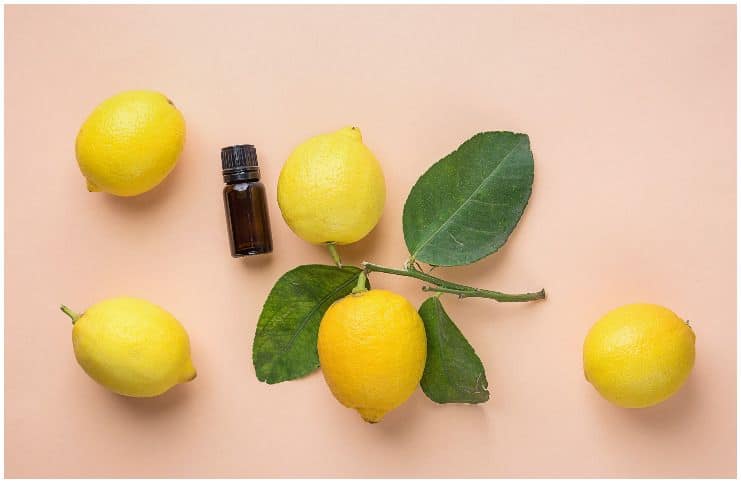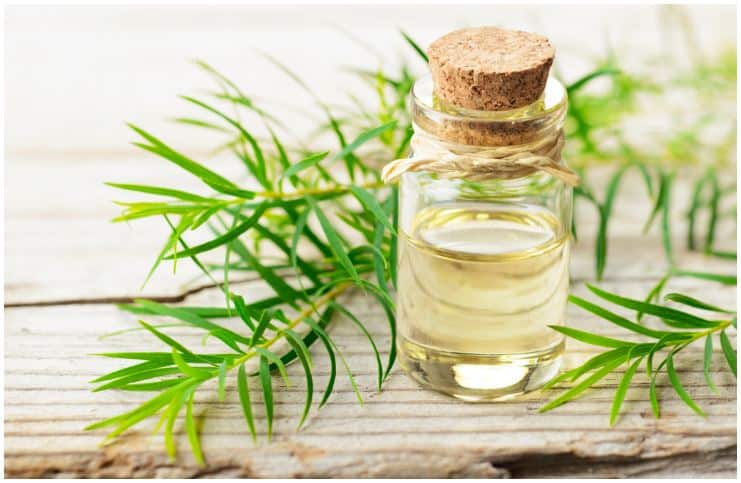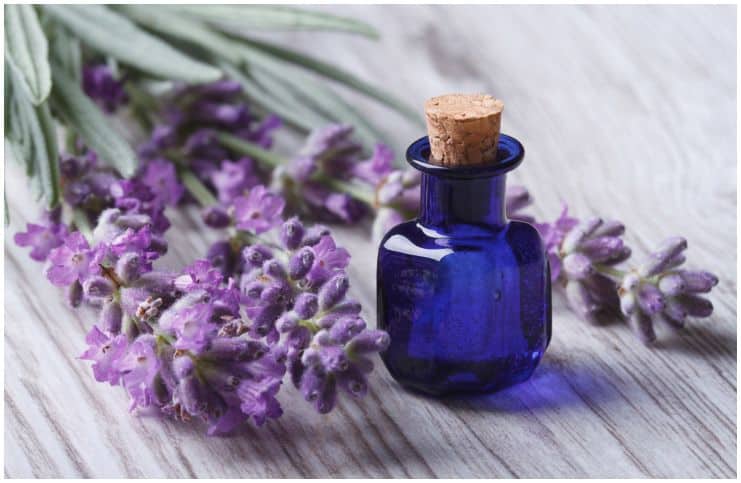10 Essential Oils For Swimmer’s Itch (Cercarial Dermatitis):
Swimmer’s itch, also called cercarial dermatitis, is a skin rash that is caused by an allergic reaction to the larvae of small worm-like parasites called schistosomes.
Schistosomes spend their life cycle as parasites in the bloodstream of aquatic mammals, ducks, or other waterfowl and in the bodies of water snails.
While the parasite’s preferred host is the specific mammal or bird, if the parasite comes into contact with a swimmer, it may burrow into the skin, causing a rash and an allergic reaction.
Note – it can’t enter the deeper tissues or bloodstream.
Swimmer’s itch usually occurs during the summer months. It cannot be spread from one person to another and is not contagious. It is less common in salt water (called clam digger’s itch).
Symptoms
Symptoms may include:
- a rash may appear within 12 hours after infection;
- a burning or itching feeling on the skin;
- a rash that typically goes away in about seven days;
- the rash only occurs in areas exposed to the lake water.
Notes – try not to scratch since scratching may cause the rash to become infected. The severity of the symptoms depends on how many larvae get onto the skin.
When to Call the Doctor
You should contact your healthcare professional when:
- the rash lasts over 14 days;
- itching becomes severe;
- the rash becomes infected.
Causes
Swimmer’s itch is caused by a parasite found in many lakes. Also, similarly to the reaction to poison oak or poison ivy, cercarial dermatitis is a reaction of the skin to an irritant.
Diagnosis
Your healthcare professional may ask you questions to help make a diagnosis, such as:
- medical history, especially if you have any allergies and take any supplements or medications;
- if other people who were in the water with you also got a rash;
- if you have been wading or swimming recently in freshwater;
- when did the rash start?
Treatment
Common treatments include:
- an antihistamine like Benadryl (active ingredient diphenhydramine which is usually recommended for sneezing, runny nose, and itching) will decrease the reaction;
- treatment includes corticosteroid creams or Calamine lotions.
Here Is A List Of 10 Essential Oils For Swimmer’s Itch (Cercarial Dermatitis):
#1 Chamomile
It is an anti-inflammatory, analgesic, and cicatrizing agent, meaning it restores the skin back to its healthy appearance.
#2 Eucalyptus
Eucalyptus oil is made from leaves of selected eucalyptus tree species.
It has anti-inflammatory properties as well as it may help you with your skin issues.
#3 Clove
Clove essential oil has antimicrobial, antifungal, antiseptic, aphrodisiac, antiviral, and stimulant properties.
#4 Coconut
It exhibits anti-inflammatory and analgesic activities, making it a wonderful remedy for relieving itching and redness caused by skin allergies. Furthermore, coconut essential oil contains medium-chain fatty acids that have powerful moisturizing properties.
Important note – in order to get the impressive health benefits of coconut oil, make sure to choose organic, virgin coconut oil.
#5 Geranium
Geranium essential oil has been used to treat health conditions for centuries.
It acts as an astringent and possesses powerful anti-inflammatory, antibacterial, and antiseptic attributes.
#6 Lemon
Lemon essential oil benefits your skin by hydrating the skin and nourishing damaged skin.
According to research, lemon essential oil inhibits the growth of pathogenic bacteria, reduces the risk of allergic reactions, and enhances the immune system.
#7 Tea Tree
Tea tree oil is an essential oil that has numerous benefits for the skin.
It is produced from the Australian plant with the scientific name of Melaleuca alternifolia. Tea tree oil has amazing antiseptic properties and has been proven to kill viruses, fungi, and bacteria.
#8 Lavender
Lavender oil is an essential oil which is derived from the lavender plant.
Lavender essential oil may help soothe your symptoms due to its ability to reduce and calm inflammation.
#9 Olive
Olive oil is packed with potent antioxidants, such as vitamin E, which help to repair and heal the skin after it has suffered allergic damage.
#10 Basil
This essential oil helps to detoxify the body of viruses and bacteria while fighting pain, inflammation, and fatigue.
Note – there have been some concerns with the toxicity of one of basil’s principal compounds – methyl-chavicol.
Home Remedies
#1 Baking Soda
Make a paste of baking soda and water into a cup and apply it on the itchy spots as required.
After 10 minutes, rinse the area with cool water. Do not leave this paste on your skin for too long, as it could cause more irritation.
#2 Quercetin
Quercetin, found in many vegetables, fruits, and leaves, is a plant flavonol from the flavonoid group of polyphenols. It plays an important part in fighting free radical damage and is considered one of the most abundant antioxidants in the human diet.
Also, it has been shown to reduce allergic reactions and inflammation.
Foods rich in quercetin include
- capers;
- apples;
- broccoli;
- green tea;
- red grapes;
- red onions;
- moringa;
- chia seeds;
- beets;
- red cabbage;
- cilantro;
- dill;
- radish leaves;
- radicchio;
- carob;
- ancho peppers;
- goji berries;
- plums;
- watercress;
- cranberries.
#3 Apple Cider Vinegar
Apple cider vinegar, made from apples, is often used as a delicious salad dressing or ingredient.
Moreover, apple cider vinegar can protect your skin from infection and can help in treating skin allergies since it contains acetic acid, that exhibits amazing antimicrobial and anti-inflammatory properties.
#4 Aloe Vera
Aloe vera is a succulent plant species of the genus Aloe. Aloe vera gel is widely known to help heal wounds and to relieve sunburn.
In addition, topical use of the clear gel of the aloe plant may soothe the itch of cercarial dermatitis and other skin problems.
#5 Oatmeal Bath
People have used it for centuries to ease irritated skin. Oatmeal has numerous biologically active properties, including anti-inflammatory and antioxidant components. All these active ingredients can help soothe the itch of allergic skin reactions.
Soak for about twenty minutes.
Tip – if you feel sticky when you are done, after you get out of the bath, you can rinse yourself off with warm water.
Prevention
To reduce the likelihood of developing this allergic reaction:
- do not attract birds to areas where people are swimming;
- towel dry or shower immediately after leaving the water;
- do not swim near or wade in marshy areas where snails are usually found;
- do not swim in areas where signs have been posted warning of unsafe water;
- do not swim in areas where cercarial dermatitis is a known problem.
READ THIS NEXT:
Essential Oils For Trigeminal Neuralgia
10 Essential Oils For Bedwetting (Child)
Pleurisy – 10 Natural Remedies + Symptoms
Essential Oils For Costochondritis
References https://www.sciencedirect.com/science/article/pii/S1438463915000450 https://www.ncbi.nlm.nih.gov/pmc/articles/PMC1448328/ https://www.sciencedaily.com/releases/2004/05/040520061706.htm
